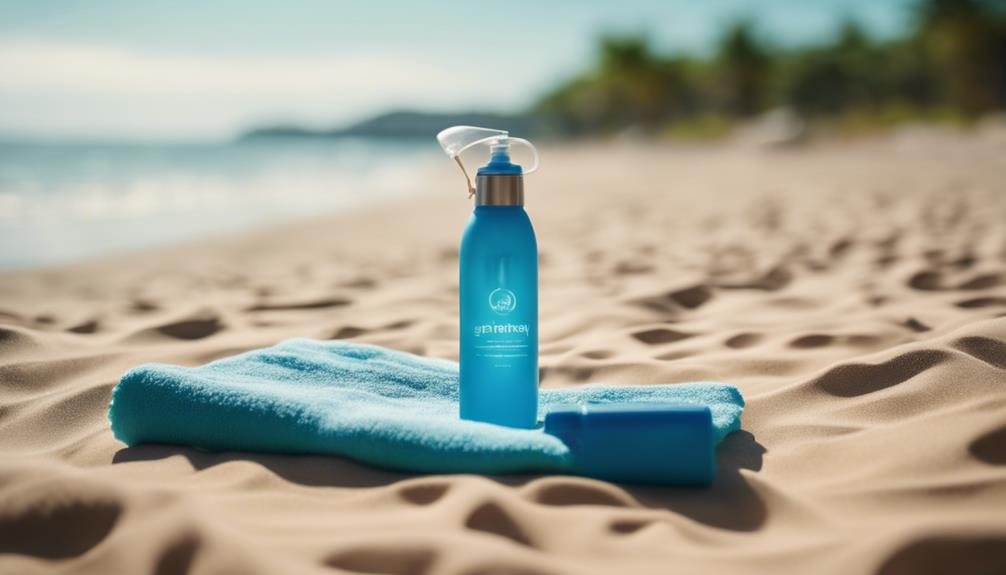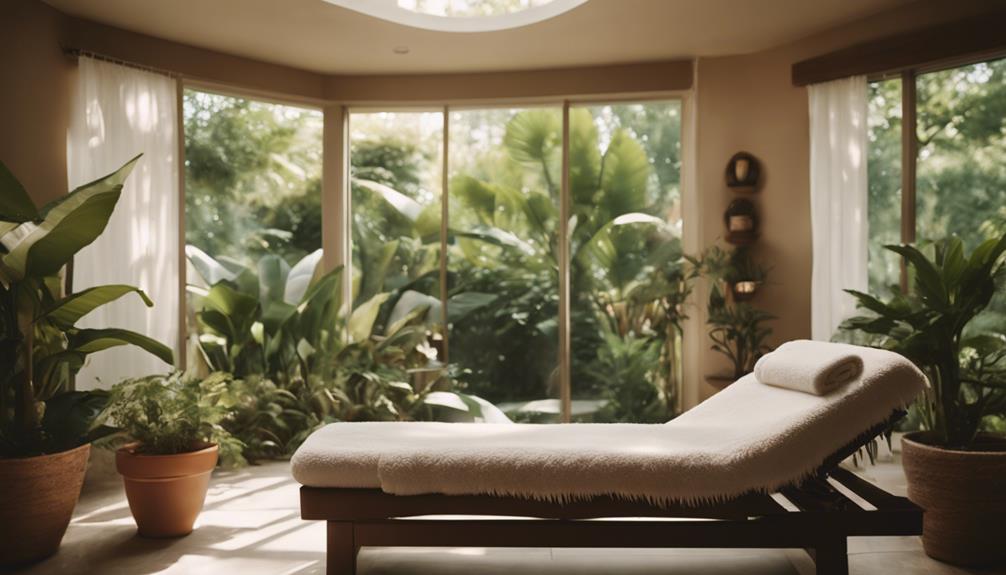The revised text: Environmentally conscious tanning bed care promotes sustainable cleaning and maintenance methods. Use eco-friendly cleaners, such as a solution of vinegar and water, to properly disinfect surfaces without harsh chemicals. Make it a habit to clean after each use and make sure to do a thorough cleaning session once a week. Use gentle materials like microfiber cloths and soft sponges to keep the bed in good condition. Choose reusable accessories to reduce plastic waste, and consider natural options for tanning, such as spray tans or self-tanning lotions. This not only helps preserve the tanning bed but also benefits the environment, with more tips available to improve your eco-friendly practices.
Key Takeaways
- Use biodegradable cleaners and a vinegar-water solution for effective and eco-friendly sanitization of tanning beds.
- Establish a routine for cleaning after each use and perform deep cleaning weekly to prevent buildup.
- Employ non-abrasive cleaning materials, like microfiber cloths and soft sponges, to protect tanning bed surfaces.
- Utilize sustainable cleaning accessories, such as reusable spray bottles and bamboo tools, to minimize plastic waste.
Eco-Friendly Cleaning Practices
Implementing eco-friendly cleaning practices is vital for maintaining the hygiene and longevity of tanning beds while minimizing environmental impact.
Selecting biodegradable cleaners free from harsh chemicals is essential; natural solutions such as a mixture of vinegar and water can effectively sanitize surfaces.
Utilizing specially designed tanning bed disinfectants guarantees that harmful germs are eradicated without compromising eco-friendly values.
Regular disinfection of surfaces is necessary to prevent bacteria growth and uphold hygiene standards.
For convenience, a homemade cleaner can be prepared using a 1:1 ratio of distilled white vinegar and water, stored in a labeled spray bottle for easy access.
Prioritizing eco-friendly cleaning methods not only preserves the integrity of tanning beds but also contributes to a healthier environment.
Regular Maintenance Schedule
A consistent maintenance schedule is vital for guaranteeing the longevity and hygiene of tanning beds, complementing the eco-friendly cleaning practices already established.
It is important to implement a routine that includes cleaning the tanning bed after each use. This guarantees that all surfaces remain free from bacteria and harmful residues.
Additionally, scheduling deep cleaning sessions on a weekly basis can help prevent buildup and maintain peak performance. During these sessions, allow eco-friendly cleaning solutions to sit for a brief period to enhance their effectiveness.
Regularly inspect bulbs and components to verify they are functioning correctly, as neglect may lead to premature wear or malfunction.
A well-structured maintenance schedule not only promotes safety but also extends the life of the tanning bed.
Non-Abrasive Cleaning Materials

Regularly utilizing non-abrasive cleaning materials is vital to preserving the integrity of tanning bed surfaces while effectively maintaining hygiene. By employing microfiber cloths and soft sponges, you can guarantee that the acrylic components remain scratch-free and in peak condition. It's important to select cleaning agents that are gentle yet effective, avoiding harsh abrasives that could compromise the bed's surface.
| Material Type | Emotional Impact |
|---|---|
| Microfiber Cloth | Gentle touch, peace of mind |
| Soft Sponge | Comfort in cleanliness |
| Eco-Friendly Cleaner | Caring for the environment |
| Regular Maintenance | Assurance of safety and health |
Sustainable Cleaning Accessories
Incorporating sustainable cleaning accessories not only enhances the effectiveness of your cleaning routine but also aligns with eco-friendly practices that benefit both the environment and the longevity of tanning beds.
Utilizing reusable spray bottles greatly reduces plastic waste, while choosing applicators made from recycled materials promotes sustainability. Bamboo cleaning tools offer a biodegradable alternative that is both effective and gentle on surfaces.
To further support your eco-conscious efforts, consider assembling a cleaning kit that includes natural, non-toxic cleaners and microfiber cloths, which are highly absorbent and reusable.
These choices not only guarantee a thorough clean but also help maintain the integrity of your tanning bed, ultimately extending its lifespan while minimizing environmental impact.
Safe Tanning Alternatives

Exploring safe tanning alternatives allows individuals to achieve a sun-kissed glow without the risks associated with UV exposure from tanning beds.
Options such as spray tans and self-tanning lotions provide a vibrant, natural-looking tan while avoiding skin damage.
Tanning wipes offer convenience for on-the-go applications, while bronzing powders can enhance your complexion without any commitment.
For those seeking a more natural approach, oils like coconut oil can impart a subtle glow.
These alternatives not only minimize health risks but also align with eco-friendly practices when using organic or sustainably sourced products.
How Do Eco-Friendly Tanning Bed Care Tips Differ from Essential Tanning Bed Safety Tips?
When it comes to tanning bed care, eco-friendly tips focus on using natural and organic cleaning products, reducing energy consumption, and minimizing waste. On the other hand, tanning bed safety tips emphasize proper usage, avoiding overexposure, and protecting the skin from potential damage. Both are essential for a healthy tanning experience.
Conclusion
Incorporating eco-friendly practices in tanning bed care considerably contributes to environmental sustainability and user health.
Remarkably, studies indicate that approximately 70% of traditional cleaning products contain harmful chemicals, which can adversely affect both human health and ecosystems.
By adopting biodegradable solutions and non-abrasive materials, the tanning industry can minimize its ecological footprint.
Emphasizing regular maintenance and sustainable accessories further enhances the longevity of tanning equipment while promoting a safer tanning experience for all users.










